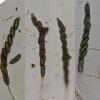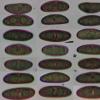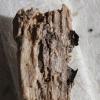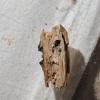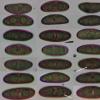
21-01-2026 16:32
Gernot FriebesHi,I need your help with some black dots on a lich

21-01-2026 16:48
Gernot FriebesHi,after my last unknown hyphomycete on this subst

20-01-2026 17:49
 Hardware Tony
Hardware Tony
I offer this collection as a possibility only as e

15-01-2026 15:55
 Lothar Krieglsteiner
Lothar Krieglsteiner
this one is especially interesting for me because

17-01-2026 19:35
Arnold BüschlenHallo, ich suche zu Cosmospora aurantiicola Lite

16-01-2026 00:45
Ethan CrensonHi all, On decorticated hardwood from a New York

18-01-2026 12:24
Hello.An anamorph located on the surface of a thin
Nemania aureolutea?
Bohan Jia,
21-01-2026 19:55
Hi,
Could this be Nemania aureolutea? Or did I found something different?
on deciduous wood
spores:
13.7 [15.4 ; 16.1] 17.9 × 5.2 [5.8 ; 6.1] 6.7 ?m
Q(L/W) = 2.3 [2.6 ; 2.7] 3.0 ; N = 39 ; C = 95%
Me = 15.8 × 6.0 ?m ; Qe(L/W) = 2.6
asci:
90.1 [109.0 ; 146.7] 165.5 × 7.8 [8.4 ; 9.6] 10.2 ?m
Q(L/W) = 9.1 [11.7 ; 16.9] 19.5 ; N = 4 ; C = 95%
Me = 127.8 × 9.0 ?m ; Qe(L/W) = 14.3
spores:
13.7 [15.4 ; 16.1] 17.9 × 5.2 [5.8 ; 6.1] 6.7 ?m
Q(L/W) = 2.3 [2.6 ; 2.7] 3.0 ; N = 39 ; C = 95%
Me = 15.8 × 6.0 ?m ; Qe(L/W) = 2.6
asci:
90.1 [109.0 ; 146.7] 165.5 × 7.8 [8.4 ; 9.6] 10.2 ?m
Q(L/W) = 9.1 [11.7 ; 16.9] 19.5 ; N = 4 ; C = 95%
Me = 127.8 × 9.0 ?m ; Qe(L/W) = 14.3
Best Regards
Bohan
Till Lohmeyer,
21-01-2026 21:20
Re : Nemania aureolutea?
Hi, Bohan -
could well be but you should check your sample for a "fugacious greenish or greenish-yellow hyphal layer around the perithecial mounds" and / or a yellow stain of the substratum below the perithecia. (see pyrenomycetes. fr., here cited).
regards from Bavaria
Till
could well be but you should check your sample for a "fugacious greenish or greenish-yellow hyphal layer around the perithecial mounds" and / or a yellow stain of the substratum below the perithecia. (see pyrenomycetes. fr., here cited).
regards from Bavaria
Till
Bohan Jia,
22-01-2026 00:02
Re : Nemania aureolutea?
Hi Till,
I made some cross-section of the stromata and I didn't find yellow pigment in the substrate. Furthermore, I realized that there was visible germ slit on some of the spores. So I think it's not Nemania aureolutea but Nemania aenea then :). Thanks for the tip.
Best regards
Bohan


